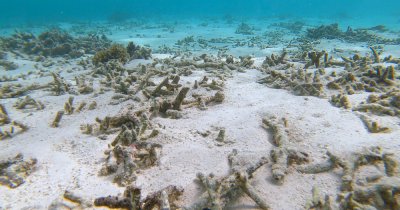Business Insider writes that building the new capital will require around 35 billion USD to accommodate the 30 million people currently residing in the Jakarta metropolitan area, which is sinking slowly due to climate change. Currently, around 40% of Jakarta's area is below the sea level.
While other countries moved their capital cities in the past, this is the first time climate change played a crucial role and it could be an insight of what could happen to other cities around the world that are currently dealing with the dangers of rising sea levels.
Nusantara's site, located in East Kalimantan, was chosen based on its proximity to the sea, while being at lower risk from natural disasters, such as earthquakes, volcanic eruptions or tsunamis. Constant erosion caused 40% of the surface of the city of Jakarta to be underwater currently, while by 2050, experts estimate that a third of the city could be underwater. While building the new capital, Indonesian authorities are also investing billions in protecting the current capital from rising sea levels.
Nusantara will be located on the Indonesian territory of the Borneo Island, which is shared with Brunei and Malaysia. Around 23 million people currently inhabit Borneo, which is home to the endangered Bornean orangutan and to the 140 million year-old rainforests. Between 150.000 and 200.000 workers currently build the new capital.
As of right now, the main roads are already built for the governmental buildings and some 500.000 people could inhabit the city at first.
To mitigate the environmental impact of building a city from scratch, Indonesian authorities pledged to make Nusantara a "green walkable" capital city, which will be powered entirely by renewables by 2045. A 50 megawatt solar park is part of the plans and by the end of the decade, only EVs will be roaming the streets.
Financing the project could prove to be a challenge, as Indonesian authorities pledged only 20% towards the new city and other sources of funding are yet to be found.
 Mihai - Cristian Ioniță
Mihai - Cristian Ioniță












Any thoughts?